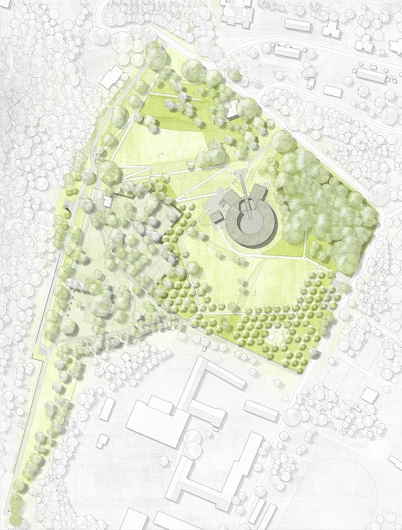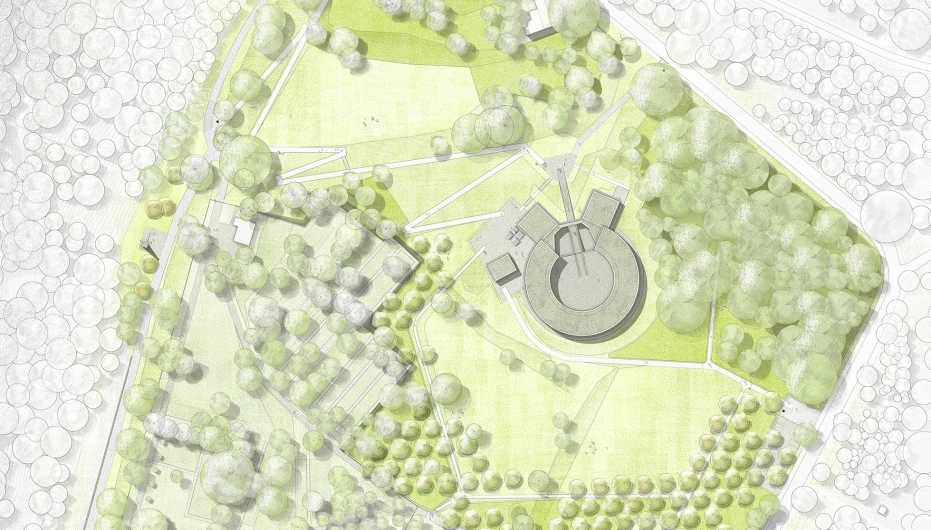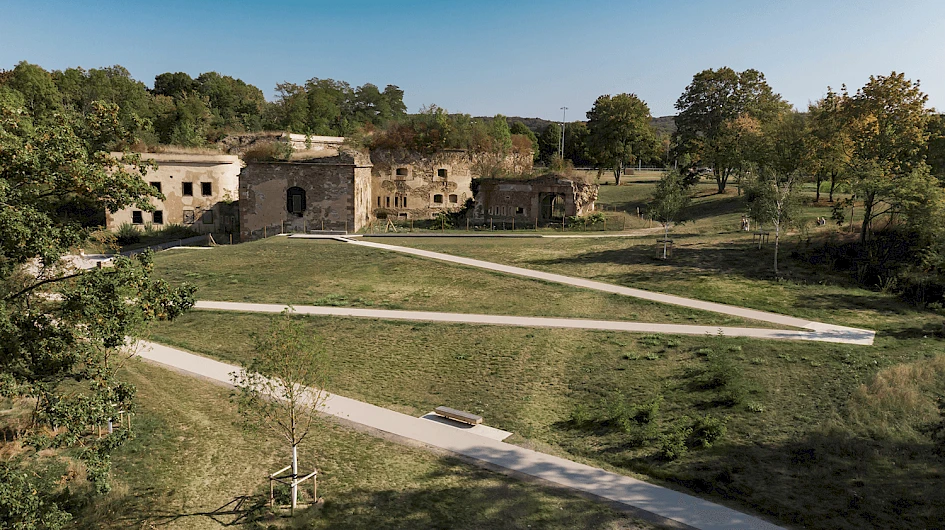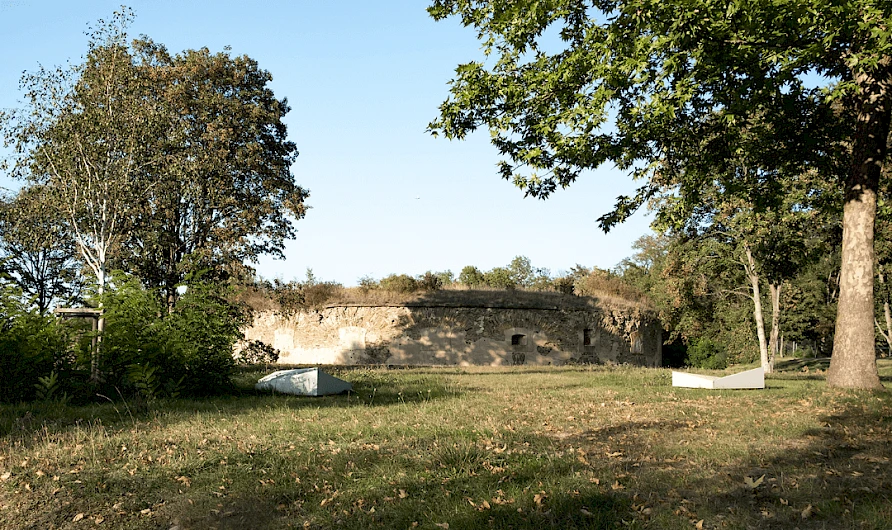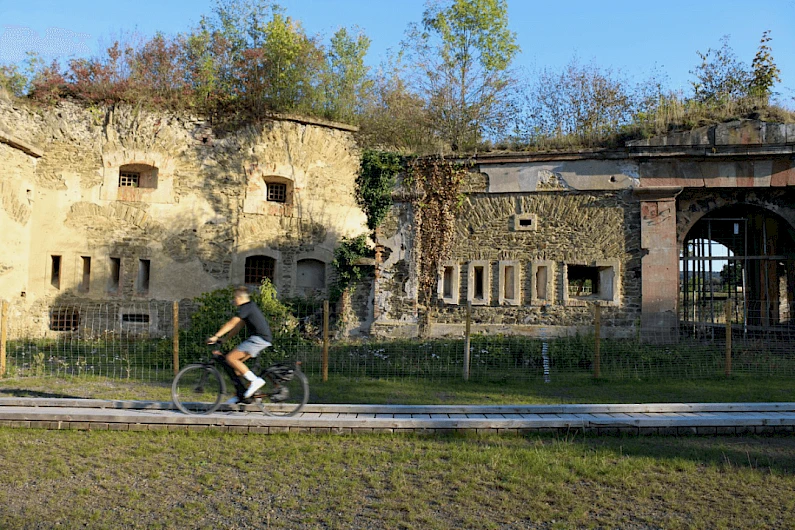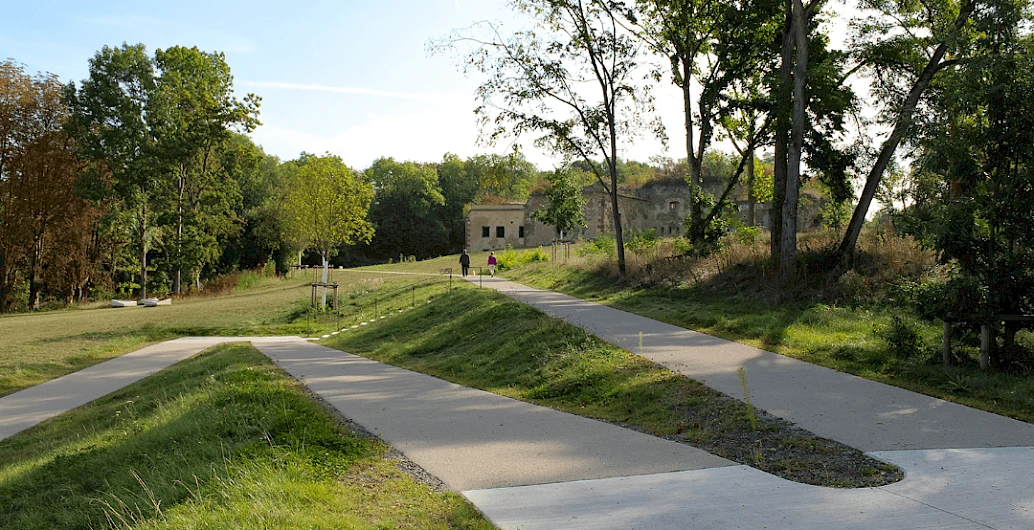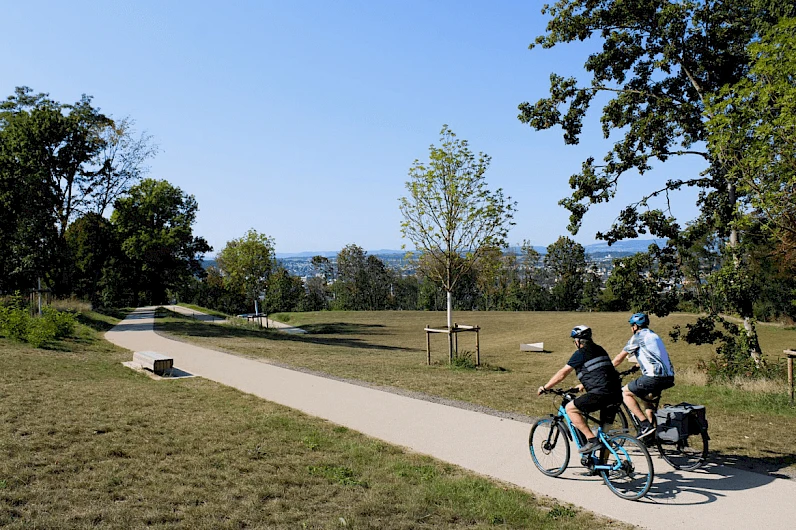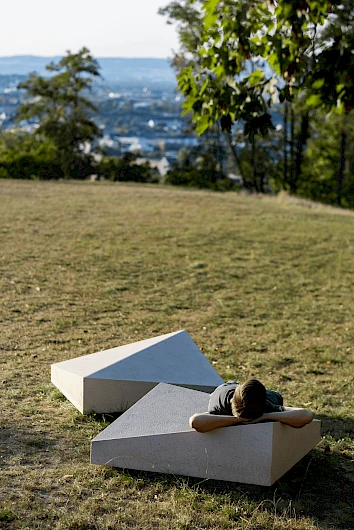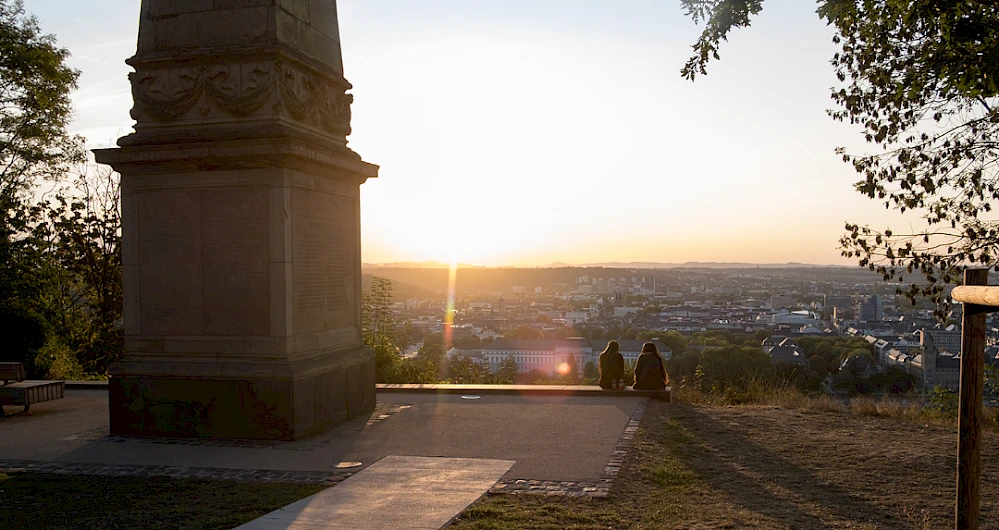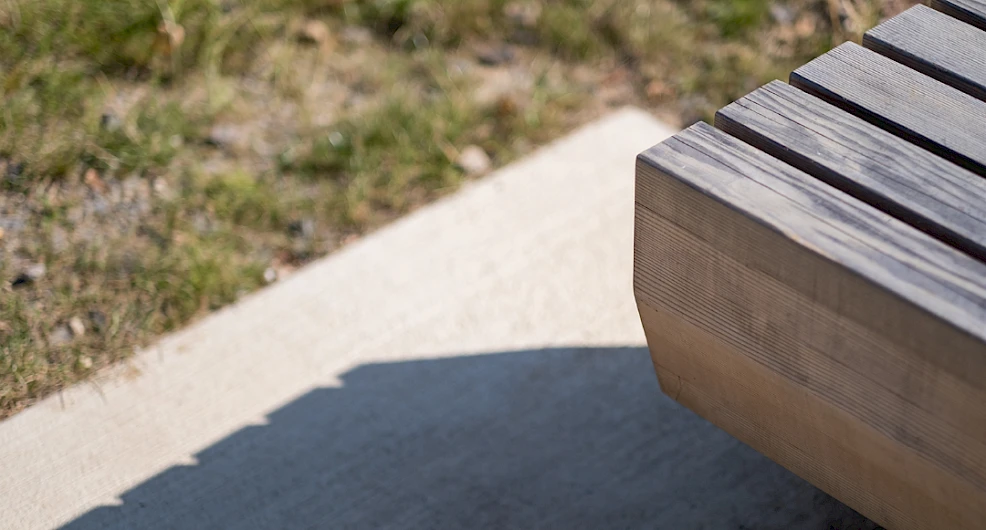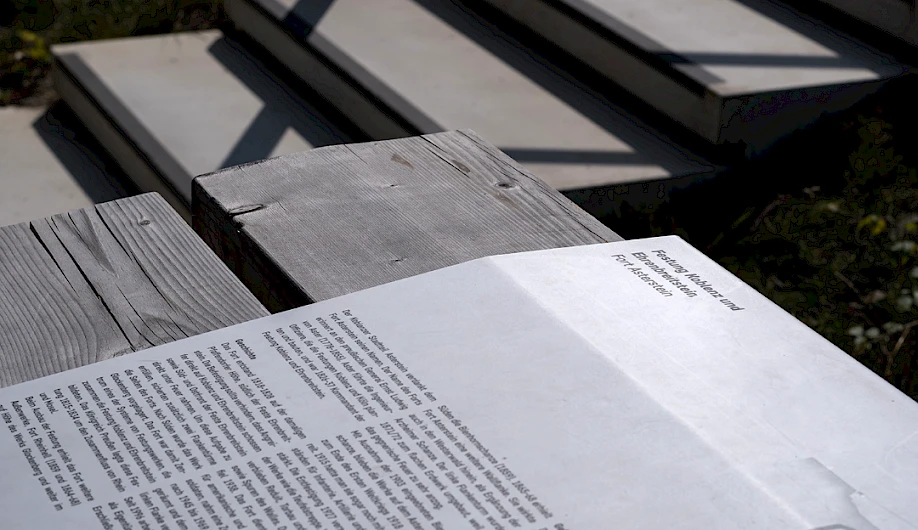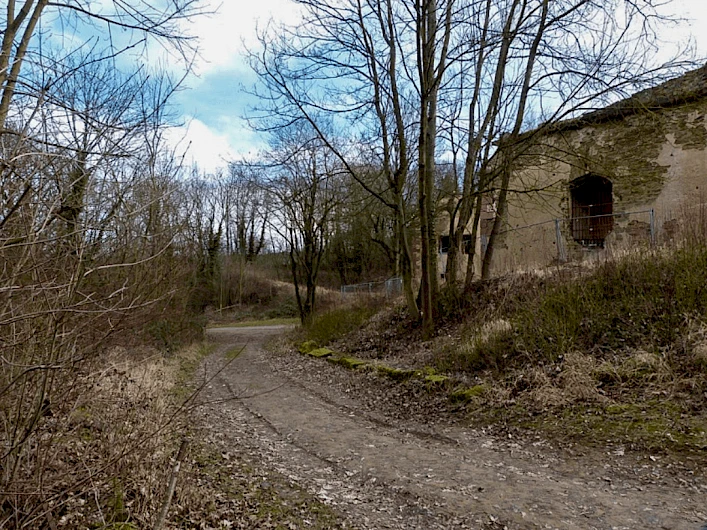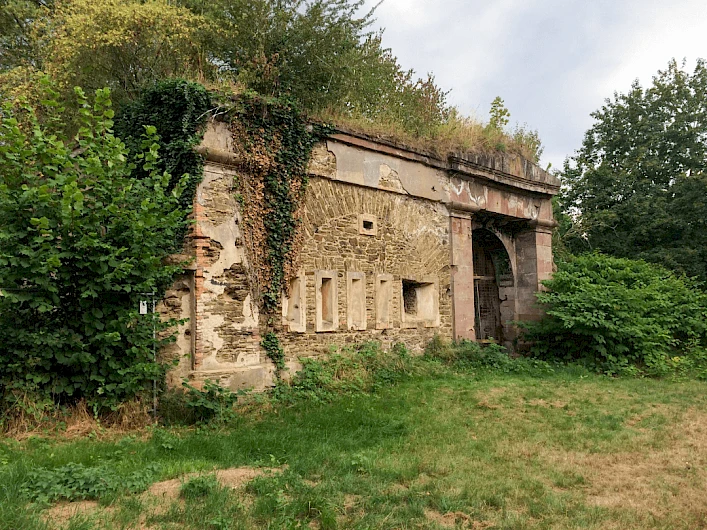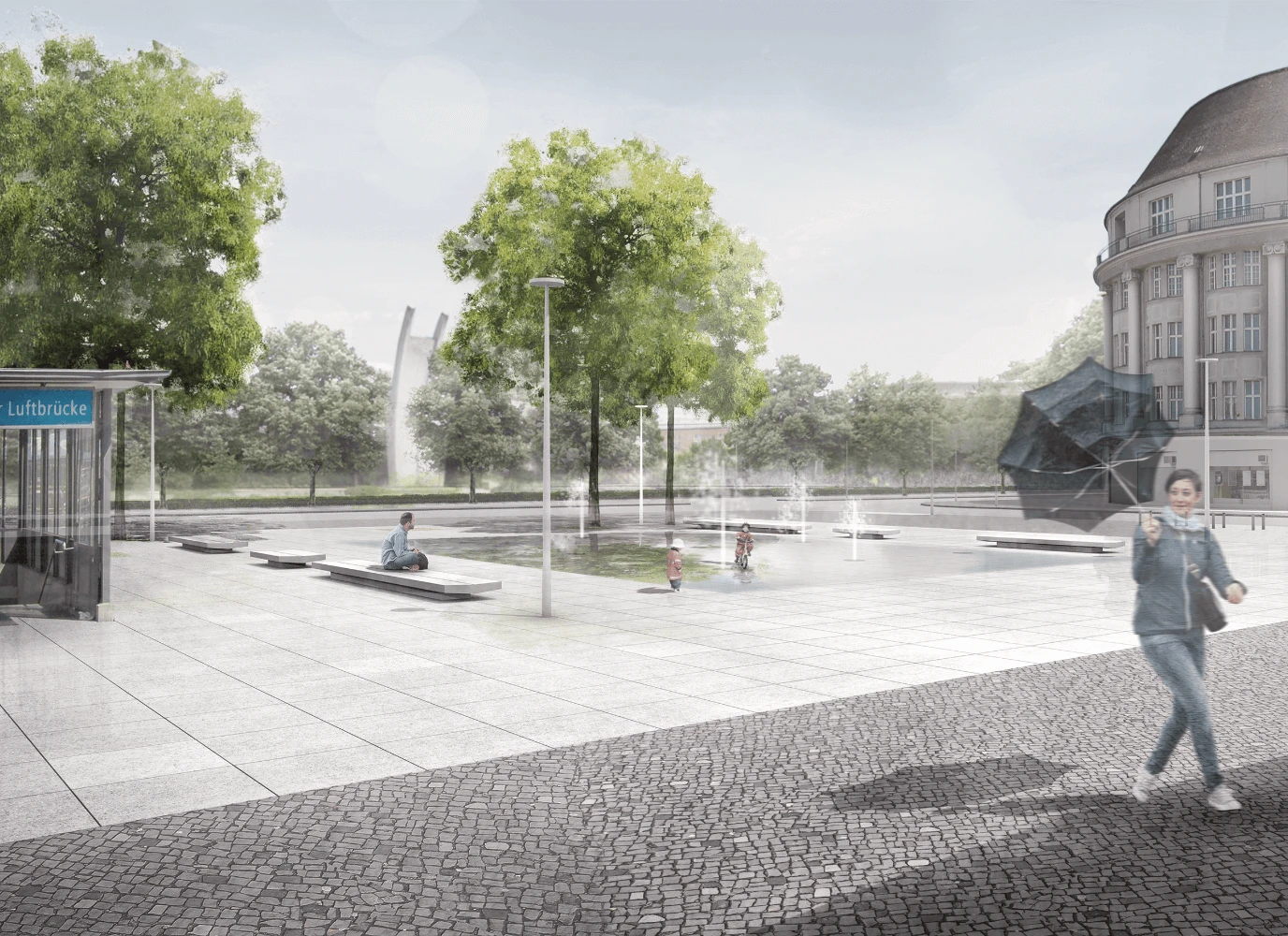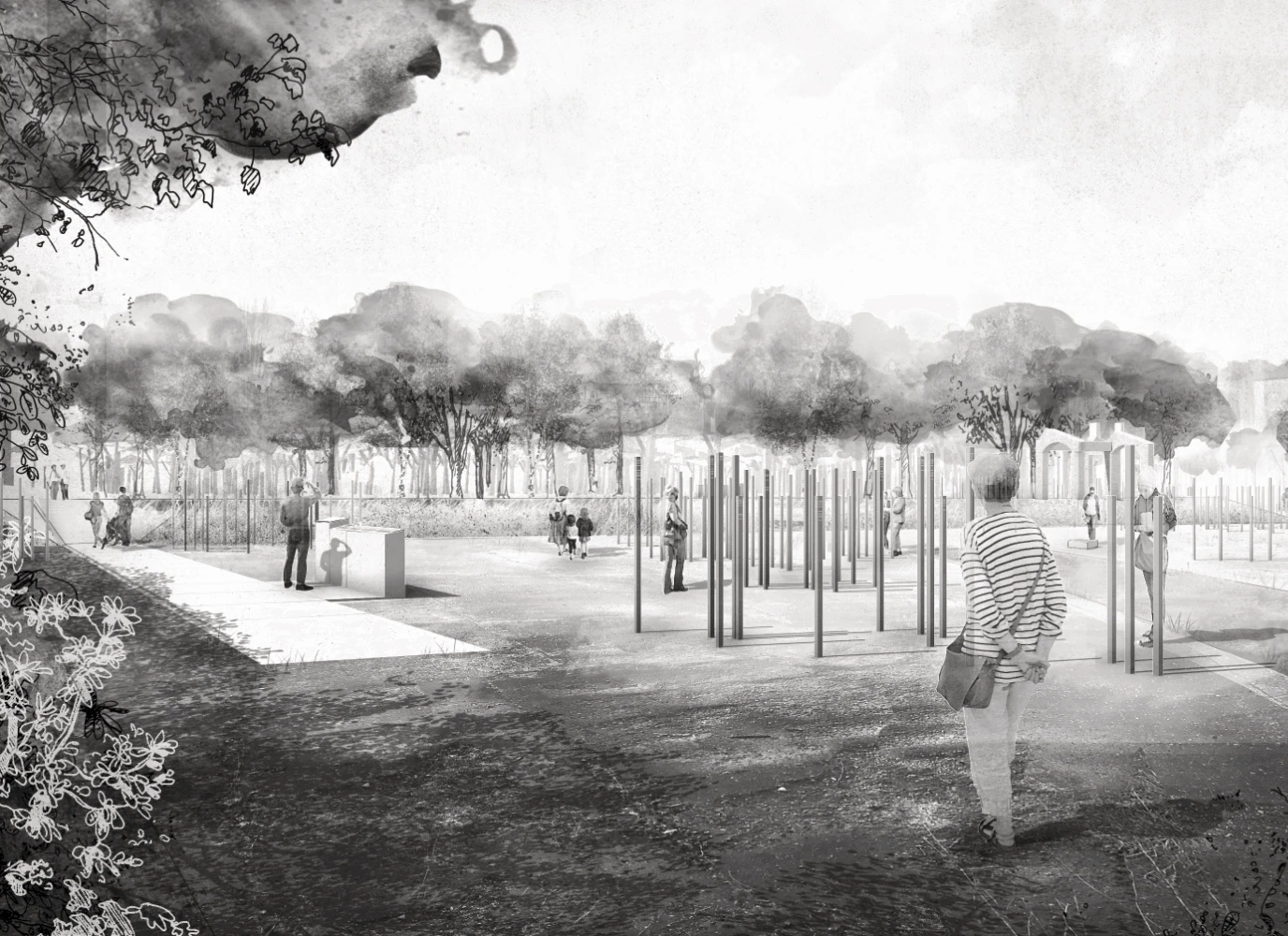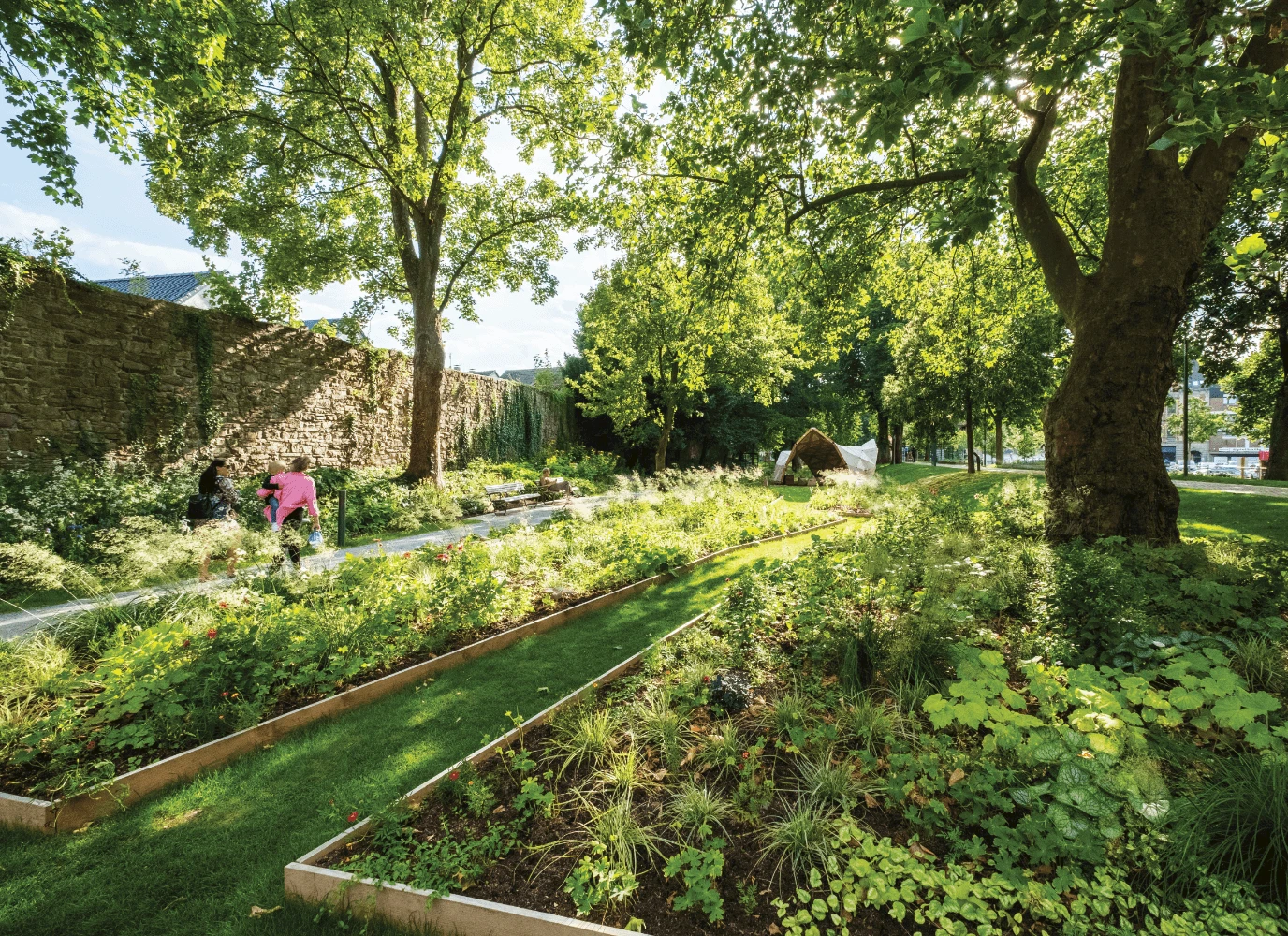Fortress Park Fort Asterstein, Coblenz
The fortifications of the large Coblenz fortress, including their open spaces, are part of the UNESCO World Heritage. With a specific open space design, the perceptibility of the monuments is to be increased and their potential for the public space of the city utilised. The surroundings of Fort Asterstein are of great significance at quarter level as well. The guiding principle is not a reconstruction of the historical aspect but the interaction of layers of time within a sustainable and robust fortification park. It is determined by the free-standing reduit in the park and a loose edge made up by a birch pattern on the former moat structures. Narrow paths embossed on the topography will lead through the park and serve as a connection to its surroundings. In the context of the first construction stage, the accessible path layout between the obelisk and the reduit was implemented. Visual connections to the Ehrenbreitstein fortress as well as Fort Konstantin were freed up from the dense tree population. Further construction stages were planned as part of an overall concept and will be realised in steps until 2029.


